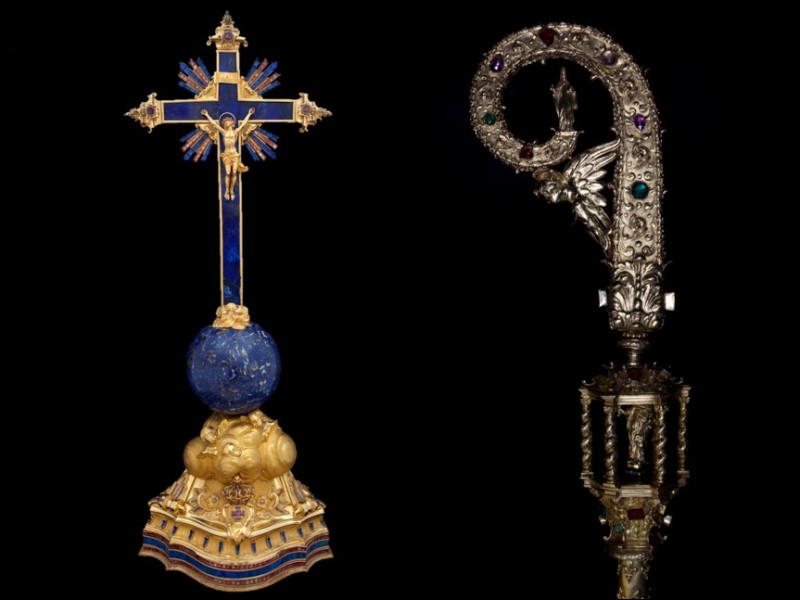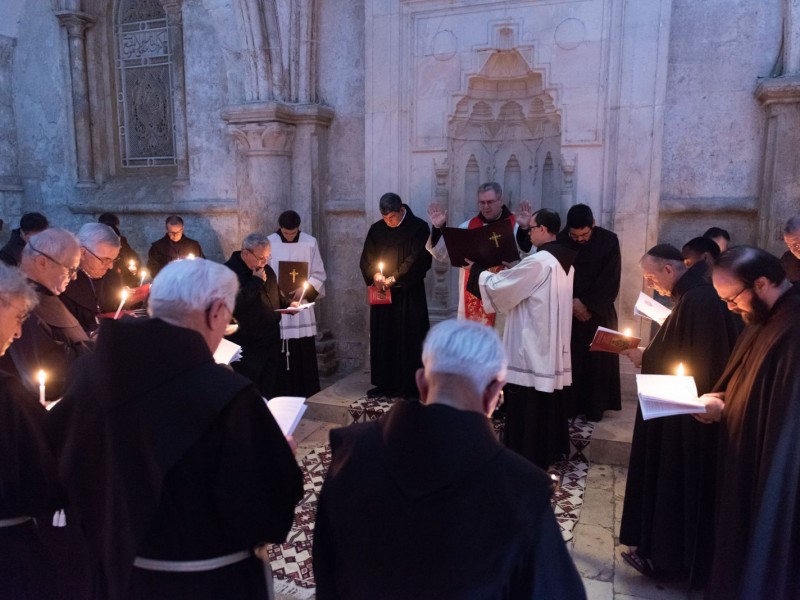The assembling of the Treasury of the Custody by the commissioners of the Holy Land
On the occasion of the 4th International Congress of Commissioners of the Holy Land, held at Jerusalem from 26 November to 2 December, the Terra Sancta Museum recounts the role of these representatives of the Custody in transporting works constitutive of the Treasury of the Holy Land since the 15th century.

“Over the centuries, Christian nations have regularly sent silver and diverse goods to the Holy Places, in order to sustain, defend and ensure assistance to the Franciscans charged with guarding the sanctuaries. The articles sent pertained to those resources necessary for a community to live self-sufficiently: silver, victuals, medicine, books, sundry materials and tools, including material and decoration intended for the celebration of the liturgy, both for ordinary time as well as for particular feasts and ceremonies. All of these goods were gathered in the commissariats of the Holy Land instituted in each nation; there they awaited conveyance to their final destination, the Custody of the Holy Land.” So explains Danièle Véron-Denise, honorary conservator of patrimony and member of the Scientific Committee of the Terra Sancta Museum, in the catalogue of the exhibition “The Treasury of the Holy Sepulchre” published in 2013.
The Franciscans escorting these goods were not otherwise spared innumerable difficulties during their voyages, as Danièle Véron-Denise underscores, “pirates, tempests, bandits, or disease accompanied each step of their journey. Upon arrival at the Franciscan convent in Jerusalem, the end of their punishing journey, the escorts delivered the alms and shipped goods—or what remained—to the procurer.” Each article was then entered into the official registry. Today, that registry allows us to know the needs the recipients, both for their daily life and for festivities, as well as to understand what pressures they could submit to in order to satisfy the demands of the local authorities. These works, of which some will be exhibited in the museum, “equally present a reflection of the devotion and the interest borne by the Christian nations for the foundational places of their religion,” she concludes.
Today, the commissioners of the Holy Land continue to exercise their role as representatives and liaisons between the Custody of the Holy Land and the churches where they are planted all over the world. Their primary mission is to spread knowledge and love for the Holy Land through organizing pilgrimages, prayer, disseminating information, and inviting financial support for the Christians in the Holy Land via the collection for the Holy Places which takes place each year on Good Friday.
To review the list of all the commissariats of the Custody of the Holy Land, visit the official page of the Custody of the Holy Land: http://custodia.org/default.asp?id=1607




